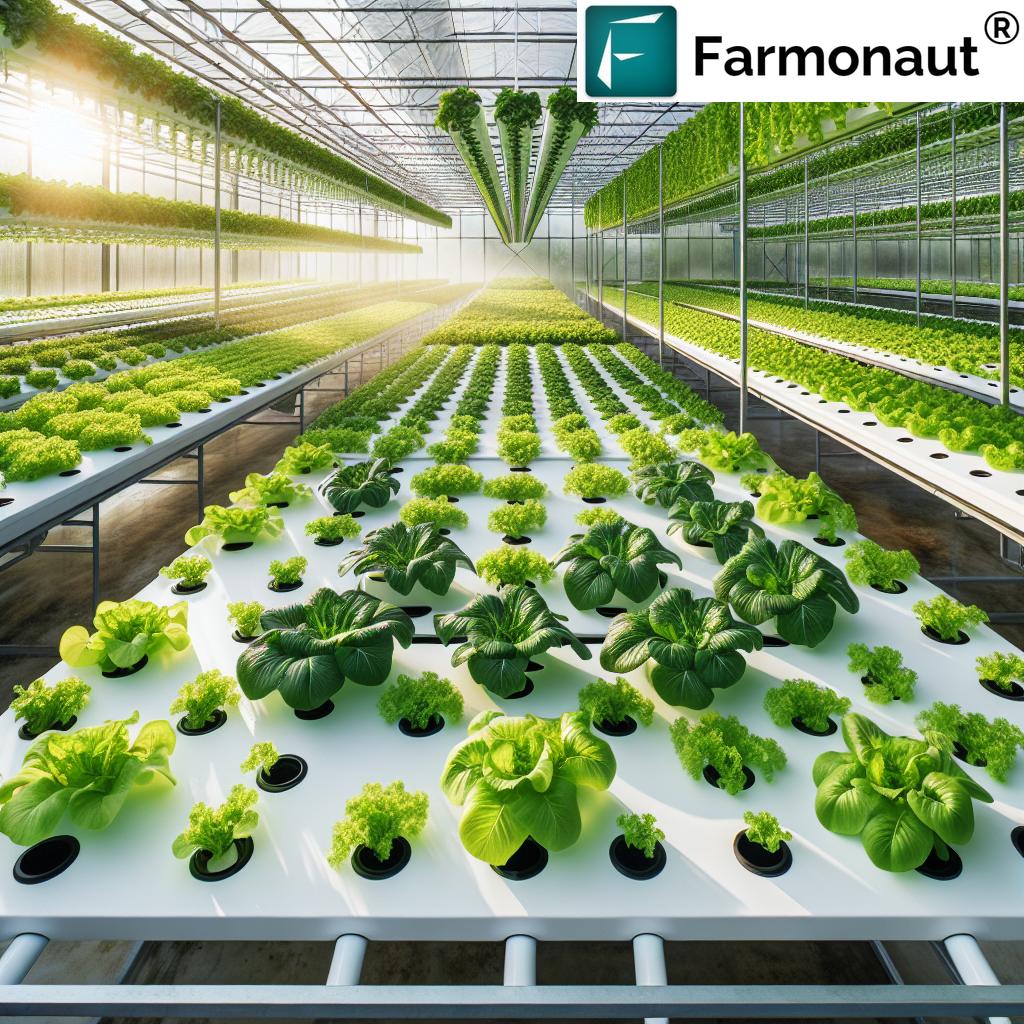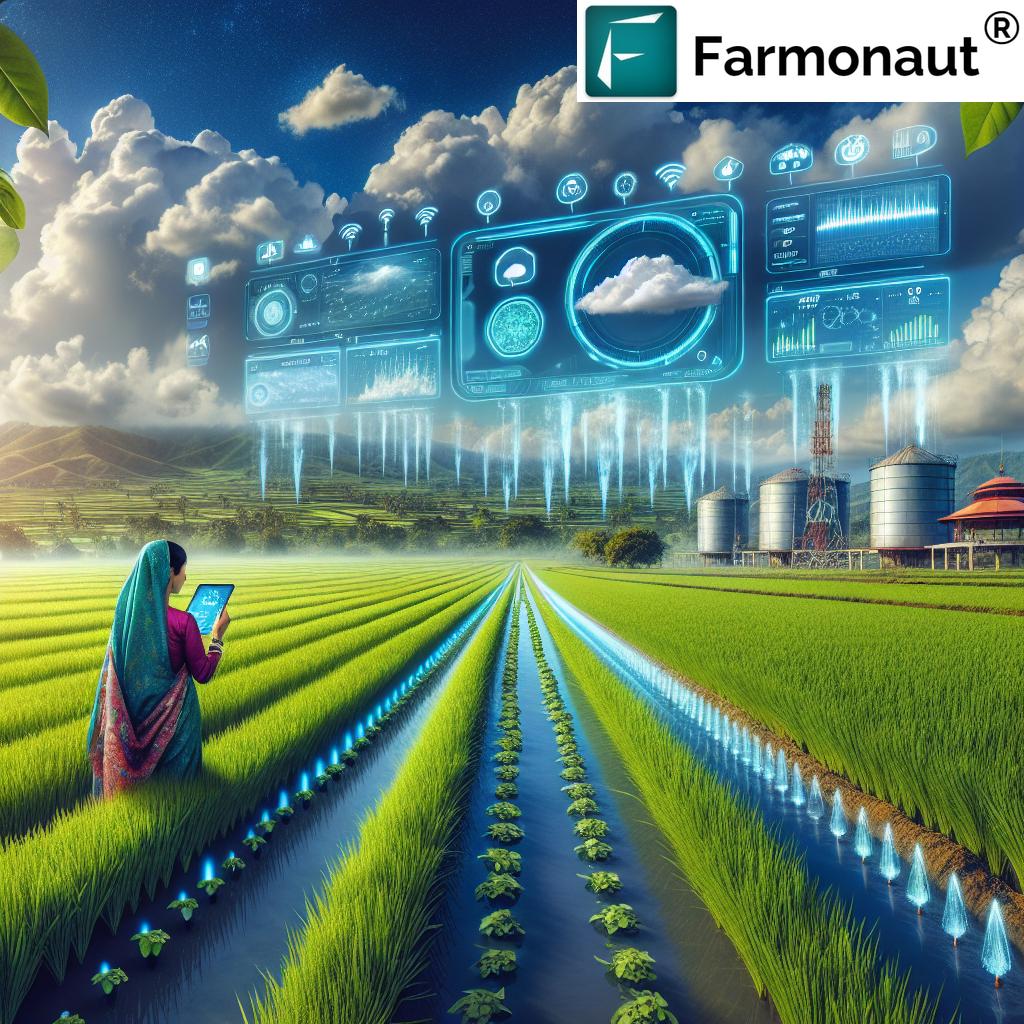China Agricultural Hauling: 7 Innovations for Agricultural Lands
“China’s smart agricultural hauling logistics cut delivery times by up to 35% with advanced route optimization.”
Table of Contents
- Summary: Advancements & Challenges in Agricultural Hauling in China’s Agricultural Lands (2025)
- The Importance & Scale of Agricultural Hauling in China
- Technological Innovations Transforming China Agricultural Hauling
- Comparison Table: Key Innovations in Agricultural Hauling
- Infrastructure & Policy Support: Foundations for Success
- Current Challenges in Agricultural Hauling in China
- Future Outlook: The Road Ahead for Agricultural Hauling
- Frequently Asked Questions (FAQ)
Summary: Advancements & Challenges in Agricultural Hauling in China’s Agricultural Lands (2025)
Agricultural hauling is a critical aspect underpinning the productivity, efficiency, and sustainability of China’s vast agricultural landscape. By 2025, our nation’s ambitious goals around food security, rural revitalization, and environmental sustainability have elevated the modernization of agricultural hauling systems to a strategic imperative. Agricultural hauling in China’s agricultural lands is increasingly influenced by cutting-edge technology, electrified vehicles, autonomous solutions, smart logistics platforms, and supportive policies. Despite this rapid progress, real challenges remain—from smallholder inclusion and last-mile connectivity to climate risks and managing complex supply chains.
This comprehensive guide delves into seven innovations revolutionizing agricultural hauling, comparing their impact, scale, and deployment across China. We discuss the importance of robust infrastructure, highlight how smart logistics and modern equipment are transforming rural farming operations, and scrutinize the ongoing challenges and future directions.
The Importance & Scale of Agricultural Hauling in China
At the heart of China agricultural production lies an enormous network responsible for the transportation of crops, inputs (like seeds, fertilizers, pesticides), machinery, and harvested produce—collectively known as agricultural hauling. The country produces more than half a billion tons of grain annually, supporting millions of rural livelihoods spanning fertile plains of the North China Plain to the hilly terraces of the Southwest. Each region’s unique geography and infrastructure heavily influence the nature and challenges of hauling.
- Critical for food security: Timely and high-quality transportation ensures inputs reach farms and harvested crops arrive at processing centers without spoilage.
- Impact on productivity: Delays, inefficiencies, or bottlenecks in agricultural hauling can directly reduce quality and economic returns, impacting China’s rural farmers and national export competitiveness.
- Sustainable development: Modernizing hauling systems contributes to green agriculture by reducing emissions and supporting rural environmental goals.
- Vast operational scale: The size and complexity of China’s agricultural lands, comprising over 130 million hectares, require smart logistics systems and adaptable equipment.
As our focus shifts to 2025 and beyond, the foundation for agricultural hauling in China’s agricultural lands is increasingly defined by technological advancements and modern logistics innovations.
Technological Innovations Transforming China Agricultural Hauling
As the agricultural sector enters an era fueled by smart technologies and government policy, seven key innovations are redefining agricultural hauling in China’s agricultural lands in 2025. Let’s examine each technology, its role in productivity, sustainability, logistics, and economic viability.
1. Autonomous Vehicles and Robotics in Agricultural Hauling
Autonomous vehicles—including self-driving tractors, robotic harvesters, and unmanned ground vehicles—are rapidly penetrating China’s large-scale farming operations and state-backed agricultural cooperatives. These autonomous solutions feature AI-based navigation, real-time sensor fusion, and remote tracking for hauling harvested crops and delivering inputs across vast terrains.
- Reduce labor reliance and operational costs, especially during seasonal peaks.
- Minimize spoilage by enabling timely, precision delivery and pickup.
- Increase efficiency in remote or challenging terrain (e.g., hilly terraces in the Southwest).
2. Drone Logistics and Aerial Delivery Systems
Drones—once used solely for remote crop inspection—now handle rapid transportation of seeds, fertilizers, pesticides, and even small batches of harvested produce between fields and collection centers. Drone logistics are a game-changer for fragmented or hard-to-reach rural areas, shortening time-in-transit and reducing logistical costs per unit.
- Speed up last-mile delivery in difficult terrain or flooded fields.
- Support precision agriculture with payload sensors for weather and crop status.
- Lower emissions and community impact, aligning with environmental goals.
3. Electric Hauling Trucks, Tractors & Trailers
With national directives on emissions reduction and green development, electric vehicles (EVs) are reshaping agricultural hauling. Battery-powered tractors, small electric trucks, and modular electric trailers now operate on regional transport routes and within large farms.
- Enable “green” logistics, supporting China’s commitment to carbon neutrality by 2060.
- Less noise and air pollution—ideal for ecologically sensitive agricultural lands.
- Economic operational costs (lower fuel/maintenance) and government subsidies support mass adoption.
Farmonaut’s real-time carbon footprint tracking (learn more) helps farming businesses monitor and report the environmental performance of their hauling fleet, aligning sustainability with regulatory requirements.
4. Smart Fleet Management & IoT Tracking Systems
The rise of Internet of Things (IoT) in agriculture means every asset—from a combine harvester to a grain-hauling truck—can be connected, tracked, and managed digitally. By integrating GPS, load sensors, weather data, and AI analytics, fleet operators can optimize vehicle usage, enhance route efficiency, and minimize down-time or spoilage.
- Mitigate spoilage risk: Real-time temperature, humidity, and shock sensors alert for hazardous conditions in transit.
- Boost efficiency: Geo-fencing and route optimization reduce redundant trips and operational costs.
- Fleet maintenance: Predictive analytics schedule repairs to prevent breakdowns during critical harvest or planting periods.
Interested in digital fleet optimization for agricultural hauling? Explore Farmonaut’s fleet and resource management tools here.
5. Advanced Route Optimization Algorithms
China’s smart logistics platforms now leverage AI-driven route optimization—analyzing real-time traffic, road conditions, weather, and delivery schedules to dynamically adjust hauling routes and fleet assignments. These optimization models reduce delivery times and emissions by matching vehicle size and dispatch to haul loads and geographical constraints.
- Algorithms consider rural infrastructure quality, harvest volume, and processing deadlines.
- AI can reroute or delay trucks in adverse weather to avoid spoilage or losses.
This “smart” scheduling cuts time-in-transit and reduces energy waste on underfilled or backhauled vehicles—a crucial advantage for today’s agricultural lands.
Comparison Table: Key Innovations in Agricultural Hauling (China, 2025)
| Innovation Name | Estimated Productivity Improvement (%) | Estimated Sustainability Impact (Index) | Implementation Scale in China (% adoption) | Notable Example/Case Study |
|---|---|---|---|---|
| Autonomous Vehicles & Robotic Haulers | 25–40% | High–Very High | 22% (large/cooperative farms) | Robotic harvesters on North China Plain |
| Drone Logistics & Aerial Delivery | 10–22% | Medium–High | 14% (rural/remote regions) | Drones delivering inputs in Southwest terraces |
| Electric Hauling Trucks/Tractors/Trailers | 18–30% | Very High | 18% (regions with green policy support) | EVs in Hebei’s green zones |
| Smart Fleet Management & IoT Tracking | 20–27% | High | 35% (modern equipment users) | IoT-enabled fleets in Shandong |
| Advanced Route Optimization | 20–32% | High | 40% (privately operated logistics firms) | National smart route logistics platform |
| IoT-Connected Modular Cargo Solutions | Up to 14% | Medium–High | 10% (pilot/early adopters) | Modular containers in food hub corridors |
| Blockchain-Based Load Traceability | 12–19% | High (traceability score) | 11% (supply chain providers) | Blockchain systems for export traceability |
6. Modular Cargo and Connected Storage
China’s rapid growth in agriculture and food processing has driven demand for modular, sensor-equipped containers and smart storage solutions. Modular cargo units are especially important for:
- Adapting to regional requirements for produce, temperature, ventilation, and cargo type.
- Quick transfer between road, rail, and aerial hauling systems for fresher, higher-quality deliveries.
- IoT connections report on spoilage risks, weather conditions, or deviations in transit.
“Robotic harvesters in China have increased hauling efficiency on large farms by over 25% since 2020.”
7. Blockchain-Based Traceability Systems
Blockchain technology enables end-to-end traceability of crops and harvested goods as they move along the agricultural hauling chain. By 2025, more logistics providers and export-oriented cooperatives are adopting blockchain to:
- Validate origin, journey, and handling conditions for high-value produce.
- Ensure transparency and food safety compliance in international trade.
- Reduce fraud, boost consumer trust, and streamline export inspections.
Traceability in logistics not only increases international competitiveness, but also supports policy and industry requirements for transparency. Learn more about blockchain traceability for agricultural hauling here.
Infrastructure & Policy Support: Foundations for China Agricultural Hauling Revolution
Adopting advanced technologies and smart logistics in agricultural hauling is inseparable from the development of rural infrastructure and policy support—both national and provincial. By 2025, China’s “Smart Agriculture 2025” initiative and large-scale rural road upgrades have laid the groundwork for efficient, high-impact hauling systems.
- Road and bridge expansion: Improved road infrastructure has shortened average transit times and reduced hauling equipment wear-and-tear, especially in the previously under-served hilly terraces of the Southwest.
- Green vehicle and equipment subsidies: Targeted government support has accelerated the transition to electric vehicles/trucks/tractors/trailers for agricultural hauling.
- IoT and digital frameworks: Encourages the integration of monitoring, predictive analytics, and blockchain for logistics efficiency, safety, and traceability.
- Policy-driven digitalization: New rural e-government platforms coordinate supply chain actors, monitor weather conditions, and synchronize planting-to-warehouse logistics—limiting losses and spoilage.
Farmonaut: Satellite Data for Smart Agricultural Hauling
We at Farmonaut provide a comprehensive satellite-based technology platform to support the efficiency and intelligence of agricultural hauling in China and globally. Our services empower users with:
- Real-time monitoring of fields, crops, and conditions affecting hauling logistics (large scale farm management).
- AI-based advisory for weather prediction and optimal scheduling of harvest and logistics.
- Blockchain-based traceability and fleet management for transparent, secure vehicle operations.
- API solutions and integrations for custom logistics and agricultural operations: Farmonaut API | Developer Docs.
Our server- and app-based tools are designed to serve individual farmers, businesses, and government users in China agricultural sectors—making modern logistics affordable, scalable, and sustainable.
Current Challenges in Agricultural Hauling in China
Despite remarkable progress, agricultural hauling in China’s agricultural lands continues to face several significant challenges:
- Smallholder fragmentation: Over 58% of arable land is managed by smallholders. Many lack access to advanced hauling technology or improved rural infrastructure, resulting in higher per-unit transportation costs.
- Complex rural landscapes: Remote areas and mountainous regions still rely on manual labor or animal-powered hauling, limiting scaling and timely operations.
- Weather and climate risks: Increasing extreme weather conditions (like floods and droughts) disrupt hauling schedules, damage roads, and risk spoilage of crops in transit.
- Seasonal bottlenecks: Peak periods around planting and harvest overstrain hauling networks, causing delays and losses.
- Technology adoption gaps: The high cost of cutting-edge vehicles, equipment, or monitoring systems may exclude many smaller producers.
Satellite monitoring and advisory platforms can help bridge these gaps for smart, affordable logistics solutions—which is why we provide scalable offerings and API integration at Farmonaut.
Future Outlook: The Road Ahead for Agricultural Hauling in China
Looking to 2025 and beyond, experts agree that a multi-pronged, inclusive approach is the key to revolutionizing agricultural hauling across China’s diverse agricultural lands.
- Expand financial and cooperative models: Pooling resources can help smallholders access modern equipment and digital logistics systems.
- Continue rural infrastructure investment: Sustainable road, bridge, and digital network expansion will remain critical for improving transit and lowering operational costs.
- Localize manufacturing: Producing electric and autonomous vehicles locally can reduce costs and adapt technology to regional needs.
- Integrate policy incentives: Strengthen regulatory frameworks for green technologies and rural digitalization to enable sustainable development.
- Promote digital inclusion: Enhance access to digital logistics for remote or marginalized areas, leveraging satellite-driven insights (like those offered by Farmonaut’s Jeevn AI advisory system).
By aligning government support, technological innovation, rural development, and sustainability priorities, China’s agricultural hauling sector can realize its ambitious goals—boosting national food security, export competitiveness, and rural prosperity for decades to come.
In summary, agricultural hauling in China’s agricultural lands is increasingly defined by innovation, supported by infrastructure, and challenged by access and climate. As technology—including AI, satellites, electric vehicles, and blockchain—continues to mature, each step forward will benefit the entire supply chain, from rural farmers to consumers worldwide.
Learn more about our satellite AI and digital agriculture solutions for logistics, weather prediction, and smart management at Farmonaut Crop Plantation and Forest Advisory.
Frequently Asked Questions (FAQ) about Agricultural Hauling in China
1. What is agricultural hauling, and why is it important in China?
Agricultural hauling refers to the transportation of inputs (seeds, fertilizers, pesticides), machinery, and harvested crops across agricultural lands. In China, it’s critical for ensuring timely delivery, maintaining food quality, supporting economic viability of rural operations, and sustaining export competitiveness.
2. What are the main innovations transforming agricultural hauling in China’s agricultural lands by 2025?
Key innovations include autonomous vehicles, drone logistics, electric hauling trucks and tractors, smart fleet management, advanced route optimization, modular cargo solutions, and blockchain traceability systems. These technologies reduce costs, enhance reliability, and support sustainable farming at scale.
3. How do autonomous and electric vehicles help reduce emissions and improve supply chain efficiency?
Autonomous and electric vehicles enable precision logistics with less fuel consumption, fewer emissions, and lower noise. They can operate round the clock, optimize route taking into account real-time data, and meet modern standards for green agriculture.
4. What role does Farmonaut play in agricultural hauling modernization?
We at Farmonaut provide satellite-based monitoring, AI advisory, blockchain traceability, and fleet/resource management tools enabling digital, data-driven logistics for agriculture and related sectors. Our carbon footprinting and fleet management platforms support users in optimizing hauling efficiency and sustainability.
5. What is the future of agricultural hauling in remote and rural areas of China?
Future progress relies on expanded digital inclusion, continued infrastructure investment, accessible financing for modern equipment, and local adaptation of technology. Satellite and IoT technology will bridge gaps for smallholders and remote communities, helping ensure a resilient, inclusive agricultural supply chain.
Start Your Digital Agricultural Hauling Journey with Farmonaut
Experience the power of affordable, satellite-driven logistics insights and transform the efficiency and sustainability of agricultural hauling in China’s agricultural lands. Whether you seek real-time monitoring, fleet optimization, blockchain traceability, or scalable advisory for rural operations, Farmonaut’s platform is your gateway to smart, green agriculture in 2025 and beyond.












